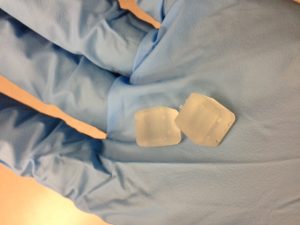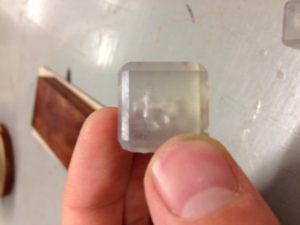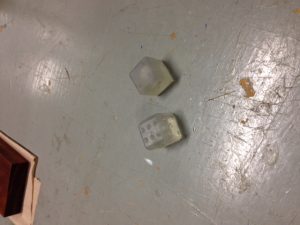This week, we were tasked with 3D printing an object that would be impossible to manufacture by normal or traditional means. I chose an object that had complex geometry in the middle of a transparent solid cube.
Ordinarily, this would be impossible to make if you were to mill this part. The inner geometry is a skull, so some of the contours would be impossible to reach with a bit. One way you could make this would be to laser cut a bunch of small sections of the die and then stack them to make the inner geometry. However, the inner geometry would have relatively low fidelity, the part would be hard to make, and have high manufacturing costs.
In order to appreciate the inner geometry of this part, I needed to 3D print the part using a translucent or clear material. Due to this constraint, I needed to use the form2 printer in the wetlab, as the open-access printers did not have this capability. I used the stereolithography printer because those typically produce parts with higher fidelity and do not require supports on interior geometry.
At first, I printed two that were half the original intended size. However, the geometry in the middle was not visible. I figured that it was due to the fact that the fluid could not drain from the interior geometry, so I found a version with a tiny, unnoticeable hole in one of the sides so the fluid would drain. I printed two more samples at the original dimensions and the parts came out well. You can see the skull outline in both.
These parts took some post processing. First, you have to scrape the part off the top fixture. Then, you have to remove the supports that were generated by the printer and submerse in the two fluids (most likely rubbing alcohol) to wash off the remaining printing liquid. After that, I noticed some irregularities on one of the surfaces, so I sanded it down with the belt sander to level it, and then went over it again with 400 grit sandpaper to remove the large grooves left by the belt sander.
All in all, the material was kind of disappointing, because it wasn’t quite as clear as I thought it would be. If we had finer grits of sandpaper in the OEDK, then I think I could have polished it more.



